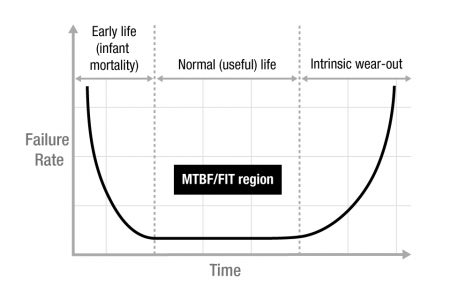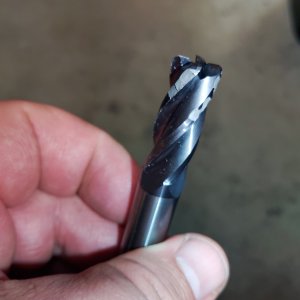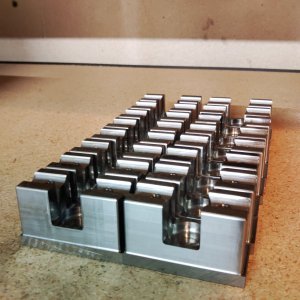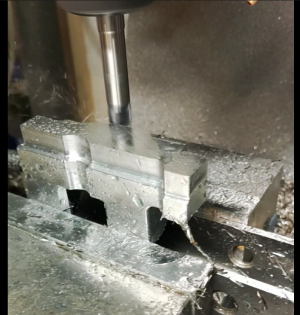I like the relieved neck idea, Mike. I can see how that could improve wall parallelism when that's important.
I'm not yet understanding why I would want a 3/8's tool when I can have a half inch tool, though. I'm not making the connection on how downsizing the diameter of an end mill improves material removal rate. Why would I take a step down in terms of tool stiffness?
These are my opinions based on experience. Your mileage may vary.
There are a couple reasons why I would recommend 3/8" (or even smaller!)
1) Carbide is expensive and you are wearing the tool regardless of if you take a 2% radial depth of cut or a 75% radial depth of cut. If I'm going to snap or chip an endmill, I'd much rather do it on a 1/4" than a 1/2". I try to use the smallest tool possible, only sizing up when I have reached the maximum productivity of that tool (max chipload, tool deflection/rigidity, stepover, max spindle rpm, depth of cut, etc.). If you are only taking a 0.005" (1%) radial depth of cut, you are nowhere near the productivity of your 1/2" tool. If it were me, I'd much rather go down to a 0.25" or 0.375" endmill and take a 15-25% radial depth of cut at full flute length. You're removing much more material with a cheaper tool that can access more part features. The one disadvantage is that the max reach on tools decreases with diameter (due to rigidity). The reduced neck tooling above can help you reach deeper with a smaller tool before sizing up.
2) Theoretically the tool should take an even bite with every tooth, however real world effects like cutter runout, screw backlash, play in the ways, workholding stiffness, toolholding stiffness, etc. all can lead to unequal flute loading. This gets to be problematic when you are already at the tool maximum chip load capacity, or in your case when you are barely engaging the tool. If you have not accounted for the dramatic chip thinning effects at 1% radial engagement, then your actual chipload for this cutter is well within the realm of rubbing. When this happens, one or several teeth on the cutter may skip or rub on the part without taking a cut, then once enough stepover has been accumulated to engage a tooth properly, it digs in taking the sum of the cuts that all the preceding teeth should have taken. This dramatically increases cutting forces, introduces a shock load that can fracture the cutter edge, and creates vibrations and chatter. A smaller cutter more fully engaged in the part (>8%) will experience these effects far less.
3) A smaller tool can access more features in more parts. As long as your machine's maximum performance is less than the tool can handle, then this gives you the most flexibility.
4) Higher flute counts on an endmill give a thicker core in the cutting flue region. This means a stronger tool and decreases tool deflection and chatter. This may allow you to avoid sizing up a tool to the next diameter.
The counter arguments
1) Cutting forces (tangential) increase as tools get smaller with the same cutting parameters. However this change is not drastic and I personally believe is outweighed by the points above.
2) Smaller tools require higher spindle speeds. At some point your machine's spindle speed will become the limiting factor in the productivity of smaller tools. If this is the case, then you size up to the next tool (assuming your machine can handle it).
You very well may be correct about the dulled tool lasting longer. I remember reading a research paper about carbide inserts and their failure rates. Couldn't find the exact figures but the inserts followed a life span probability of failure looking something like this:

The early failures were due in part to the edge being too sharp and lacking the appropriate fracture toughness for the material and cutting conditions they were machining. If early insert fracture was found, the recommendation was to select a tool with an edge hone (rounded cutting edge) which artificially "wears" the tool through the early part of the insert life into the "normal life" section of the graph. There are downsides of this as well but it may be necessary for tougher metals.
Purchasing a tool from a known quality supplier in an application specific carbide grade and geometry would likely help quite a bit. Endmills manufactured for steel machining will come with a less aggressive rake angle on the flute (stronger) and a duller edge than say an endmill made specifically for aluminum and non-ferrous.
In summary, I recommend using the smallest tool you can take full advantage of. This saves you money, increases flexibility of your machining setup, and increases the process stability (less risk of chatter and rubbing). Size up tools when your don't have enough spindle speed, or you need the tool rigidity of the thicker shank (special tool geometries, higher flute counts, and material specific endmills can help a lot in getting a sufficiently rigid tool without sizing up).
PS: in my 10 years of testing, my G0704 likes 1/4" endmills for steel and 3/8" for aluminum. I can go bigger but I actually lose MMR.









